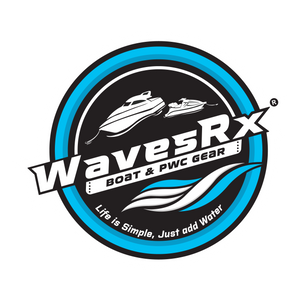Essential Guide to Docking Line Materials and Tips for Choosing the Best for Your Boat
Docking lines are the lifelines that connect your boat or PWC to shore, ensuring your vessel remains anchored securely at the dock. As a result, selecting the right docking line material is crucial for maintaining your boat's safety and simplifying your boating experience. Several types of materials are commonly used for docking lines, each with its unique characteristics, benefits, and drawbacks. Hence, understanding these differences and knowing how to choose the right material for your vessel is essential.
In this essential guide, we will explore the most commonly used materials for docking lines, including nylon, polyester, and polypropylene. We'll provide a comprehensive comparison of their features, highlight their advantages and disadvantages, and offer tips on how to select the perfect line for your boat or PWC's specific needs.
Moreover, we will discuss various factors you need to consider when selecting the right docking line material, such as your boat's size and weight, the prevailing weather conditions, and the intended purpose of the line. With this knowledge, you will be better equipped to make an informed decision and ensure your vessel remains safely and securely tethered to the dock.
Furthermore, nylon is highly resistant to sunlight, saltwater, and abrasion, ensuring it retains its strength and performance even after prolonged exposure to harsh marine environments. However, one potential downside is that nylon can be susceptible to mold and mildew when wet, which may lead to a shortened lifespan if not properly maintained.
Polyester maintains its strength and shape longer than nylon and is more UV-resistant. Additionally, it is less likely to harbor mold and mildew growth, making it easier to maintain. However, polyester lines can be more expensive than nylon and may not provide the degree of shock absorption that some boaters require in their docking lines.
However, polypropylene comes with some disadvantages. It is less abrasion-resistant and less UV-resistant than nylon and polyester, making it more susceptible to damage from environmental factors. Additionally, its reduced strength compared to nylon and polyester may not provide the desired holding power for larger boats or PWCs.
2. Weather Conditions: If your boat is often exposed to harsh weather elements, it is essential to choose a docking line material that can withstand saltwater, sunlight, and wear and tear, such as nylon or polyester.
3. Line Purpose: The intended use (anchoring, mooring, or towing) will determine the preferred material characteristics, such as flexibility, strength, or buoyancy.
4. Maintenance and Longevity: Factor in the ease of cleaning, mold and mildew resistance, and UV resistance when choosing a docking line material that suits your maintenance preferences and needs.
Whether you ultimately choose a stretchy and strong nylon docking line, a low-elongation polyester line, or a buoyant polypropylene option, taking the time to consider the various factors outlined in this guide will help you pick the perfect line for your boat.
At WavesRx, we offer a range of premium marine accessories, including docking lines, that cater to the diverse needs of boaters. Our commitment to quality and safety ensures your boat remains secure, allowing you to focus on enjoying your time on the water. Explore our wide selection of dock line materials to choose the best option for your vessel and enhance your boating experience.
In this essential guide, we will explore the most commonly used materials for docking lines, including nylon, polyester, and polypropylene. We'll provide a comprehensive comparison of their features, highlight their advantages and disadvantages, and offer tips on how to select the perfect line for your boat or PWC's specific needs.
Moreover, we will discuss various factors you need to consider when selecting the right docking line material, such as your boat's size and weight, the prevailing weather conditions, and the intended purpose of the line. With this knowledge, you will be better equipped to make an informed decision and ensure your vessel remains safely and securely tethered to the dock.
Essential Guide to Docking Line Materials and Tips for Choosing the Best for Your Boat
Navigating Nylon Docking Lines
Nylon is the most popular material used for docking lines, and for good reasons. This synthetic material provides a combination of strength, durability, and elasticity that makes it suitable for a wide range of vessels and docking conditions. Nylon docking lines are known for their ability to absorb shock loads, making them an excellent choice for protecting your boat from sudden jerks and movements.Furthermore, nylon is highly resistant to sunlight, saltwater, and abrasion, ensuring it retains its strength and performance even after prolonged exposure to harsh marine environments. However, one potential downside is that nylon can be susceptible to mold and mildew when wet, which may lead to a shortened lifespan if not properly maintained.
Pros and Cons of Polyester Docking Lines
Polyester docking lines are another excellent choice for boaters seeking strength and durability. They possess a similar tensile strength to nylon but have a lower level of stretch. This characteristic makes polyester lines ideal for applications where minimal elongation is desired, such as mooring lines, tow lines, or anchor rode.Polyester maintains its strength and shape longer than nylon and is more UV-resistant. Additionally, it is less likely to harbor mold and mildew growth, making it easier to maintain. However, polyester lines can be more expensive than nylon and may not provide the degree of shock absorption that some boaters require in their docking lines.
Exploring Polypropylene Docking Lines
Polypropylene is a lightweight, cost-effective, and versatile material often used for docking lines. The most notable advantage of polypropylene docking lines is their buoyancy, which prevents them from sinking into water. This characteristic makes polypropylene lines an excellent choice for applications involving towing or emergency situations.However, polypropylene comes with some disadvantages. It is less abrasion-resistant and less UV-resistant than nylon and polyester, making it more susceptible to damage from environmental factors. Additionally, its reduced strength compared to nylon and polyester may not provide the desired holding power for larger boats or PWCs.
Factors to Consider When Choosing Docking Line Material
1. Boat Size and Weight: The size and weight of your vessel will influence your choice of docking line material. Heavier and larger boats require stronger and more elastic lines, like nylon, to accommodate the increased stress loads.2. Weather Conditions: If your boat is often exposed to harsh weather elements, it is essential to choose a docking line material that can withstand saltwater, sunlight, and wear and tear, such as nylon or polyester.
3. Line Purpose: The intended use (anchoring, mooring, or towing) will determine the preferred material characteristics, such as flexibility, strength, or buoyancy.
4. Maintenance and Longevity: Factor in the ease of cleaning, mold and mildew resistance, and UV resistance when choosing a docking line material that suits your maintenance preferences and needs.
Conclusion
Selecting the right docking line material for your boat or PWC is a key aspect of ensuring a safe and enjoyable boating experience. By understanding the advantages and disadvantages of nylon, polyester, and polypropylene, you can make an informed decision based on your vessel's specific requirements and your personal preferences.Whether you ultimately choose a stretchy and strong nylon docking line, a low-elongation polyester line, or a buoyant polypropylene option, taking the time to consider the various factors outlined in this guide will help you pick the perfect line for your boat.
At WavesRx, we offer a range of premium marine accessories, including docking lines, that cater to the diverse needs of boaters. Our commitment to quality and safety ensures your boat remains secure, allowing you to focus on enjoying your time on the water. Explore our wide selection of dock line materials to choose the best option for your vessel and enhance your boating experience.



